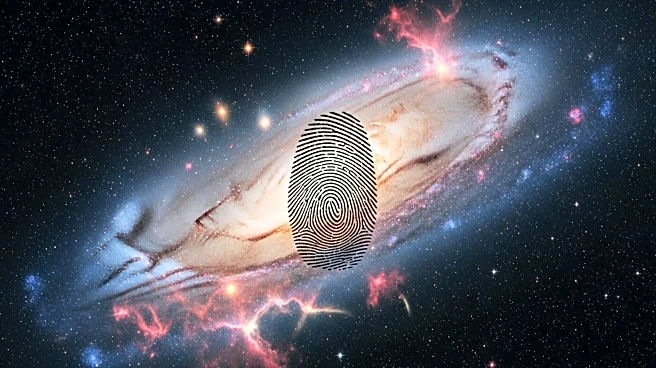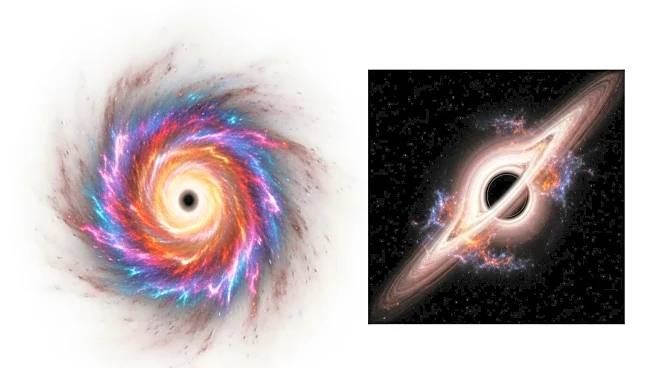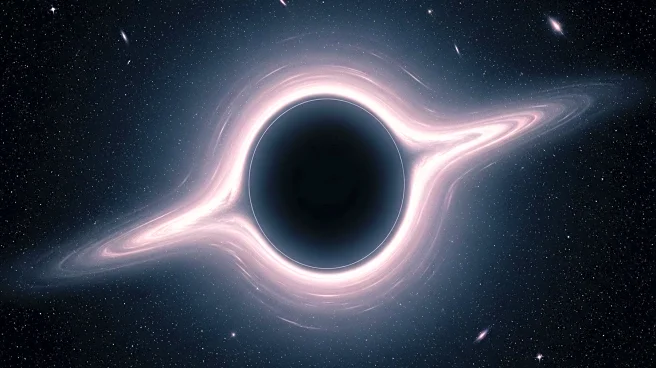What's Happening?
Astronomers have identified a rare cosmic phenomenon known as an 'Einstein Cross' that reveals the presence of a massive dark matter halo. This discovery was made by a team led by Pierre Cox from the French National Center for Scientific Research. The Einstein Cross, named HerS-3, features an unprecedented fifth point of light at its center, suggesting an unusual mass distribution. Typically, such configurations consist of four points of light, created by the gravitational lensing effect of a massive object bending the light from a distant galaxy. The presence of a fifth light source indicates a significant dark matter presence, which is invisible but exerts gravitational influence. The findings, published in The Astrophysical Journal, provide a new method to study dark matter, which constitutes a large portion of the universe's mass.
Why It's Important?
The discovery of the HerS-3 Einstein Cross is significant as it offers a unique opportunity to study dark matter, a mysterious substance that does not emit light or energy, making it difficult to detect. Understanding dark matter is crucial for comprehending the universe's structure and evolution. This finding could lead to advancements in astrophysics by providing insights into the distribution and behavior of dark matter. The ability to observe such phenomena helps scientists test theories of gravity and the universe's expansion, potentially impacting future research and technology development in space exploration and cosmology.
What's Next?
The research team plans to conduct further observations and modeling to better understand the dark matter halo's properties and its impact on the surrounding galaxy group. These studies could refine existing models of dark matter distribution and its role in galaxy formation. Additionally, the findings may prompt other astronomers to search for similar phenomena, potentially leading to new discoveries about the universe's hidden components.










